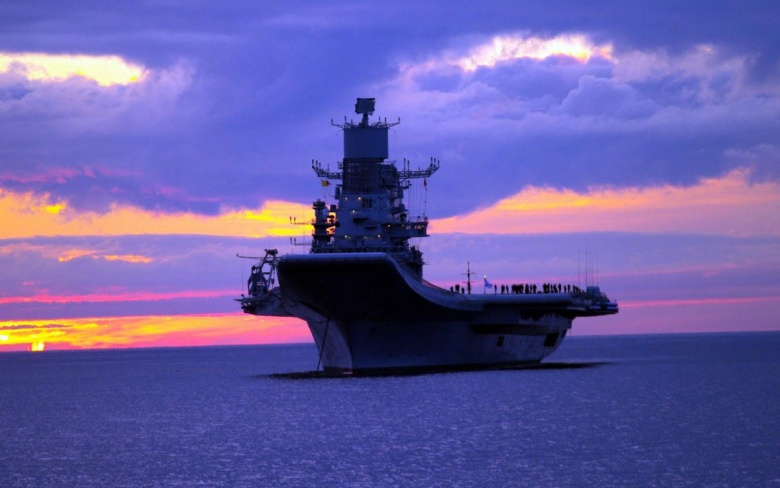
Editor's Note: Please also see Kyle's recent articles including Five Chinese Weapons of War America Should Fear , The Five Most-Powerful Navies on the Planet and Five Japanese Weapons of War China Should Fear.
India and China have been neighbors for thousands of years, and have traditionally enjoyed good relations. Only recently in their mutual history have the two sides come to blows. Despite that long peaceful history, the brief 1962 border war and subsequent disagreements over territory have chilled relations between the two.
China’s recent push to acquire what it considers historically Chinese territory has not been lost on India, and New Delhi has been stepping up modernization of its armed forces. Fortunately, the terrain on their mutual border makes a land war between the two a difficult—but not impossible—proposition. Although China soundly beat India in the 1962 war, the armies of both sides are now more evenly matched and the result could easily be a stalemate.
If India and China were to come to blows, the real war would be fought at sea. China imports large amounts of foreign oil, and two thirds of that must pass through the Indian Ocean. India sits astride the sea lanes providing China with energy. In the event of increased tensions the Indian Navy could impose essentially a blockade on China of vital shipping from the Persian Gulf and Africa.
Such a move could force the People’s Liberation Army Navy (PLAN) to travel thousands of miles around the southern end of Asia, into the Indian Ocean to confront Indian naval forces. The fate of the Chinese economy would be in the balance and could escalate to include many different domains of warfare. With that in mind, here our five weapons of such a potential conflict that China would fear most.
VIkramaditya Aircraft Carrier
India has operated aircraft carriers for more than fifty years, starting in 1961 with the carrier INS Vikrant. Commissioned in 2013, INS VIkramaditya is the latest and most powerful in a long line of Indian carriers.
The carrier was originally built for the Soviet Navy as the Baku. The original ship was an anti-submarine warfare carrier with the armament of a cruiser, including two 100mm deck guns, a staggering 192 SA-N-9 surface to air missiles and 12 giant SS-N-12 Sandbox anti-ship missiles.
Mothballed by the Russian Navy in 1996, Baku was purchased by India in 2004. The updated design deleted all cruiser armament, replacing it with a full-length angled flight deck and a ski jump to assist aircraft takeoffs. Vikramaditya’s air wing is expected to consist of 30 MiG-29K or Tejas fighters and 12 helicopters.
Vikramaditya’s refurbishment has been beset with problems. The ship was to be completed in 2008, but the shipyard encountered difficulties and delivery was pushed back five years. Vikramaditya currently is without active air defenses, relying on passive defenses such as chaff and flares. The Barak-8 short-range air defense system, a joint program by Israel and India, is behind schedule and the AK-630 close-in weapon systems are scheduled to be installed mid-2015.
China fears Vikramaditya because the carrier could lead a blockade of Chinese shipping, its aircraft increasing the Indian fleet’s radius of action. Vikramaditya could also contribute offensive air power against any Chinese fleet sortied to break the blockade.
Fifth Generation Fighter Aircraft (FGFA)
India’s first fifth generation fighter, FGFA is a collaboration between Hindustan Aeronautics Limited and the Russian Sukhoi corporation. A derivative of the Russian PAK-FA fighter program, FGFA will mark a quantum leap in Indian Air Force capabilities and will theoretically give India an aircraft in the same class as the American F-22 and Chinese J-20.
FGFA is a large multirole aircraft capable of both air to air and air to ground combat. The fighter will have all the features typical of fifth generation fighters, including a high level of maneuverability, stealth, the ability to supercruise above Mach 1, advanced fire control and an active electronically scanned array radar system.
FGFA will have large internal storage bays capable of carrying guided weapons, including up to six radar-guided missiles. Air to air missile armament will likely be the locally produced Astra, a radar-guided missile under development with a range of up to 100 kilometers. FGFA will also reportedly be capable of carrying the air-launched variant of the BrahMos supersonic cruise missile, which can attack targets on both land and sea.
India will invest a total of $25 billion dollars in the joint development project, and in return will receive up to 250 fighters. Deliveries are set to begin in 2022.